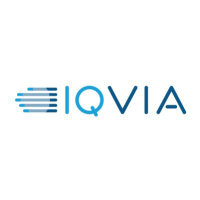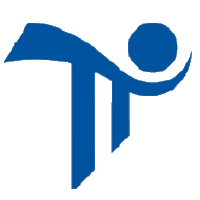
CompuGroup Medical SE & Co KgaA
XETRA:COP

Earnings Call Analysis
 Q3-2023 Analysis
CompuGroup Medical SE & Co KgaA
Q3-2023 Analysis
CompuGroup Medical SE & Co KgaA
CompuGroup Medical has impressively achieved a year-to-date performance in the first nine months of 2023 with a 10% growth in top line revenue, pushing towards EUR 900 million in group revenue. A significant driver has been Telematics Infrastructure with an organic growth rate peaking at 8% in the first half and a solid 6% thereafter, aligning with midterm goals of approximately 5% organic growth. Recurring revenue streams swelled by 11%, reflecting the company's strategic emphasis on consistent income.
CompuGroup Medical boasts an impressive growth in recurring revenues at 11% and an even stronger adjusted EBITDA increase at 18%, suggesting a robust and growing efficiency within the company. These figures exemplify the progress in building a resilient income structure and an improving bottom line, keeping the company on track to meet its full-year guidance.
The Ambulatory Information Systems (AIS) segment acts as a pillar for digitization, contributing growth through eHealth records, emergency data sets, and e-billing modules in German dental practices. Additionally, e-prescription redemption and digital processing of physician referrals have more than doubled, signifying a notable shift in the German healthcare sector's movement towards digitization, which bodes well for CompuGroup's future growth.
Hidden.
Hidden.
Hidden.
Hidden.
Hidden.
Hidden.






















 You don't have any saved screeners yet
You don't have any saved screeners yet

Ladies and gentlemen, thank you for standing by. I am Kyle, your Chorus Call operator. Welcome, and thank you for joining today's CompuGroup Medical Investor and Analyst Call. [Operator Instructions] I would now like to turn the conference over to the Senior Vice President Corporate Communications and Investor Relations, Claudia Thomé. Please go ahead.
Good morning, and welcome to the CompuGroup Medical Investor and Analyst Conference Call for the Third Quarter and Nine Months Results of 2023. It is great to have you here, whether you have dialed in via the phone or are following our webcast. You find all the relevant information such as this presentation, the quarterly statement and the press release, which we published early this morning on our website. We're going to start with the presentation by the CEO and CFO, Michael Rauch, followed by a Q&A session. Before we start, as always, some housekeeping remarks, let me remind you of our safe harbor statement, which is shown at the beginning of the slide presentation and is valid for the entire call. Thanks a lot for your patience. And now let us start. I hand over to Michael Rauch. Michael, over to you.
Thank you, Claudia. Good morning, ladies and gentlemen, and a warm welcome to all of you. CompuGroup Medical recorded a very good year-to-date performance for the first 9 months in 2023. With 10% top line growth, we almost achieved EUR 900 million in group revenue. Organic growth positively impacted by Telematics Infrastructure in the first half, showed a plus of 8%. Even with our Telematics Infrastructure, we achieved an organic growth rate of 6%, driven by the numerous growth opportunities due to digitization in health care and completely in line with our midterm ambitions of around 5% average organic growth. Recurring revenues grew also in the double digits, and even a bit stronger by 11%. Adjusted EBITDA grew above revenues by 18%, showing the ongoing anticipated improvement of our bottom line. Being on track with the performance after the 3 quarters of 2023, we are confirming our full year guidance. Before we deep dive into the numbers, I want to shed some light on the strategic milestones we laid out over the last 3 months, starting with the Ambulatory Information Systems segment, which showed continued momentum by progressing with the digitization in health care. Our AIS colleagues in Germany have been successful with the rollout of additional modules like the emergency data set, eHealth records or the tool for medication plans as well as with the ongoing campaign of selling e-billing modules in German dental practices. Also in Germany, together with the gematik and other industry peers, we've been supporting practices for an increasing usage of e-prescription in the overall market. And indeed, the numbers shown on the gematik dashboard for overall usage have grown strongly in the past couple of months. The number of redeemed e-prescription more than doubled from [ 66 million ] since August. The number of medical institution issuing e-prescriptions has also more than doubled from 6,000 to 14,000. And the number of pharmacies handling them is now at 16,000, up from 11,000. The number of electronic physicians referral letters and electronic sick notes processed digitally has also increased strongly. So we finally see the movement in Germany in terms of digitization actually kicking in as far as daily usage is concerned. We've also seen a strong quarter in Denmark, Czech and Belgium. And again, our colleagues in the U.S. delivered a good performance during the last 3 months reflected in continued growth with eHealth record and revenue cycle management solutions. Looking at our Hospital Information Systems segment, we delivered strongly on our market position and the rollout of projects related to the Hospital Future Act is picking up speed day by day. As already announced, we are fully focused on transferring the more than EUR 140 million order intake we won over the last years into revenue. The revenue contribution relating to this government initiative is ramping up quarter-by-quarter, and we've seen more revenue in the first 9 months of this year than in all of 2022 in our books. Other areas in our core market, Germany, are also growing successfully. In the third quarter, we provided rehab institutions with connectivity solutions and were thus able to lay the foundation for further digitalization of our customers. Outside Germany, Q3 has also been a good quarter, particularly for the Spanish region of our operations, where we grew through upselling and by winning net new customers. We've thus been to post organic revenue growth of 14%, the highest organic growth rate in HIS since more than 2 years in a single quarter. Let's move on to the CHS segment, where we announced news at the beginning of this month. By integrating database solutions for doctors into our Ambulatory segment, we continue to drive forward the customer focus of digital solutions and the use of artificial intelligence within the doctor offices. After the successful buildup phase of our data business empowered with panel, pharmacy, ambulatory, insurance and wholesale data, we established a comprehensive data lake to develop new apps and tools for our customers. In order to drive digitalization in health care faster, we bundle our core activities for the sake of a faster rollout of these new data solutions, a better support for physicians and pharmaceutical companies and thus optimizing customer centricity. This will also impact the segment reporting going forward. From 2024 onwards, we will completely integrate the former CHS segment into the AIS segment. To support you with your modeling, we've created an overview based on the full year 2022 results. A more detailed overview, including organic growth rates can be found in the appendix of our presentation. Let's now dive into our financials. Before discussing the financial performance of the segments, let me highlight our top line development. As already mentioned, total revenues are up 10% reported and 8% organically after 9 months in 2023. Organic growth, excluding Telematics Infrastructure, resulted in a 6% increase year-over-year. Recurring revenues increased by 11%, slightly above revenue growth, which is due to a game changer in Telematics infrastructure kicking in during the third quarter, which I will discuss in more detail later. Shedding more light on the organic growth rates. Organic growth rates in Q3 have been impacted by the TI hardware connector exchange started in Q3 2022. Excluding Telematics Infrastructure, we recorded an impressive growth rate organically of 7% and thus, fully on track towards our midterm ambitions to grow with a CAGR of around 5% organically until 2025. In Q3, the AIS segment showed the anticipated ramp-up and delivered 4% organic growth, whilst HIS and PCS showed an excellent performance above our guided ranges for the full year. We mentioned tough prior year comparison is completely reflected in CHS organic revenue development, which was guided to be below prior year and hence, fully in line with expectations. In summary, we recorded a strong financial performance also in the third quarter. Revenues in Q3 were slightly above the prior year quarter, with organic growth ex TI at 7%. The recurring revenue share jumped by 6 percentage points to 71%, and the adjusted EBITDA margin was slightly above the prior year quarter. We've seen a strong free cash flow position with EUR 90 million after the first 9 months of 2023, an excellent catch up compared to last year and well on track with our full year ambition. Let me go into more financial detail, starting with the Ambulatory segment. The AIS segment showed the expected acceleration in organic growth rates recording 4% driven by additional eHealth record, emergency data sets and strong dental module sales in Germany as well as continued execution in the U.S. The recurring revenue stood with 77% share strong. Due to our continued investments in patient portals, the adjusted EBITDA margin was 3 percentage points below prior year's level. Moving on to the Hospital segment. We report the expected improvement for the second year -- sorry, second half of the year. In Q3, our revenue growth was very strong with an organic growth rate of 14%, the highest increase since 2 years. This development is not only supported by the Hospital Future Act, but also by strong project business in Spain and Poland. With an increase of 27%, we achieved overproportionate growth in the adjusted EBITDA and are well on track to achieve the anticipated adjusted EBITDA margin increase in HIS in the second half of this year. Let's move to the Consumer & Health Management segment, which recorded a solid quarter despite tough prior years comparisons. Let me remind you that in Q3 last year, we started supporting our customers to remain safely connected to the Telematics Infrastructure with the connector hardware exchange resulting in a decrease of 24% in revenues including this year compared to Q3 2022. Organic revenues ex TI have been impacted by the continued macro-related contraction and pharmaceutical marketing spendings. Despite lower revenues, we managed to increase the adjusted EBITDA significantly resulting in a very attractive adjusted EBITDA margin of 29%. Recurring revenues represent 65% of total CHS revenues compared to 28% last year, underlining that TI flat rate in Germany is a game changer in terms of recurring revenue share as anticipated. Finally, let's talk about our Pharmacy Information Systems segment. Again, the PCS segment recorded quarter above our expectations with revenue growth of 8%, again, driven by excellent growth in Italy. An overproportionate growth in adjusted EBITDA results in a very attractive margin of 32%, 1 percentage points higher compared to last year's period. Again, a great achievement of our PCS colleagues. Let me now give you a short update about the development of our personnel expenses. The development of our personnel expenses is completely in line with our expectations. Even with wage inflation, we record an organic increase of 3% only, well below the average inflation rate in personnel expenses. We were able to impressively demonstrate that our investment phase -- that after our investment phase, we can significantly reduce our personnel expenses in relation to revenue growth. This will enable further increases in efficiency in the future. We continuously strive to improve the quality and effectiveness of our organization and also supported by the means of increased AI usage, we will further improve our ways of working. Also, R&D intensity is closely managed. In the third quarter and in the first 9 months of 2023, we've seen only minor increases compared to last year's periods. Quarter-on-quarter, the R&D expenses in relation to revenues remain on the same level, and after 9 months, we see the anticipated lower share of these expenses compared to our strong revenue development. Our R&D CapEx is decreasing and below prior year after the first 9 months of 2023, thus improving the quality of our earnings. Let's move on to free cash flow. We record EUR 90 million free cash flow after the first 9 months of 2023, up by EUR 66 million from last year's level and thus well on track towards our more than EUR 100 million ambition for the full year 2020. We achieved EUR 8 million free cash flow in Q3 and expect to achieve a free cash flow above EUR 10 million in Q4. Three weeks ago, we celebrated our successful debut at International Capital Markets, where we placed Schuldschein tranches with a total volume of EUR 300 million. The issuance consists of 3 tranches with maturities of 3, 5 and 7 years, with the last majority for 5 years and longer. With the funds from the Schuldschein and a simultaneous new issue of a 5-year term loan, the original credit facility expiring at the end of 2025 is repaid early, and the total financing volume has increased to EUR 1.4 billion with significantly extended maturities. We are fully focused on improving our leverage ratio further, and we will continue to screen the market for potential M&A targets in order to complement our successful strategy execution in the future. Let's move on to the confirmed guidance for fiscal year 2023. We expect an organic growth rate of around 5% of group revenues. The adjusted EBITDA is anticipated to be between EUR 260 million and EUR 300 million. For the adjusted earnings per share, we forecast an increase by at least 10%. The share of recurring revenues is expected in the range of 60% to 70% compared to total revenues, and we expect a free cash flow of more than EUR 100 million. In light of the midterm ambitions, we progressed on a clear path towards our targets, with highly motivated colleagues around the globe focused on supporting health care practitioners and bringing more digitization into the health care sectors. We make strong progress to deliver an organic revenue growth rate CAGR of around 5% until 2025, and these revenues will be generated with a high quality, leading to a recurring revenue share of more than 70% in the year 2025. Combined with an increased efficiency we aim for adjusted EBITDA margin of around 27%. In summary, we confirm once again, we are on track to achieving a successful year 2023 and we are well underway towards our midterm ambitions, always focused on our mission, we create the future of eHealth. With that, I want to thank you for your attention, and we are now looking forward to your questions. And I'm handing over to the operator for the Q&A session. Thank you.
[Operator Instructions] Our first question comes from Knut Woller with Baader Bank.
Just briefly on the guidance, Michael. I think looking at the comps, particularly in CHS, we are facing from a revenue perspective, tough comps, and hence, there could be a concern how you should manage to achieve the growth acceleration, to achieve the revenue consensus expectations. Can you provide some more color on the moving parts? And also looking at the TI flat rate, provide here some color on the revenue impact you're seeing for the fourth quarter. And I think also looking at the EBITDA targets from my perspective, comps in HIS are relatively easy. Looking at the progression you delivered in Q3, again, further accelerating growth momentum, further margin expansion. There should be some optimism that here, we should see a nice tailwind for EBITDA in the fourth quarter. And can you also remind us, as a second question, some more granularity on the U.S. performance, how did growth look like in absolute terms and how did profitability develop and how long do you think that these investments that burdened the profitability in HIS for the patient portals, how long this will continue to be a burden?
Thank you, Knut. Great questions. The short answer to your first question on the guidance is you got it right. So the longer answer is, yes, just for everybody's benefit, we benefited in Q4 2022, of course, from the connector exchange with onetime revenues, which means that cannot be compensated in full by the TI flat rate on the revenue portion. So that's the effect which we anticipated to see in our CHS segment and which we also have within our guidance. The conversion to the TI flat rate, yes, I see a momentum on the EBITDA profitability, which will carry us also -- will also help us carry into 2024. And you're right, on the HIS segment, we had even a negative EBITDA in the fourth quarter of last year of negative EUR 1 million. And this will turn fully positive in Q4. And we also expect a high growth rate as we hammer now our order intake of HIS from the hospital future system into revenue also in the fourth quarter of 2023. Your second question was related to the U.S. performance. The U.S. performance was in the mid-single-digit growth rate also for Q3. And we have steadily seen an expansion of the gross margin in the U.S. towards 20% rate, and we are making further progress. So congrats to our colleagues here in the U.S., nice job done. And your question regarding AIS, that is indeed true. We are investing in patient portal solutions. And those investments were mainly taken part in the third quarter of this year and we've overcome the peak of these investments. So we see an improvement also going into the fourth quarter and into 2024.
Great. And just from a better understanding regarding the impact of the TI flat rates, you're facing tougher comps in H1 next year due to the software update you had. Is it fair to assume that given that we should see basically almost a full run rate in H1 from the TI flat rate that this should be broadly compensating this headwind as well in H1 next year?
Typically -- thank you, Knut. Typically, we would guide for the full year 2024, and we will, of course, make that comment when we come to guidance announcement in February. So by and large, the TI flat rate will compensate the effect for 2023 first half and the full year 2024. But you're right, if you just basically strip out first half and second half, we are fighting against tougher comps in the first half and will be better in second half, completely correct.
Our next question comes from Yannik Siering with Stifel. Mr. Siering, your line is open.
Yannik, we cannot hear you, sorry.
Our next question comes from Florian Treisch with Kepler Cheuvreux.
Yes. I have some actually, so maybe starting with the AIS segment. So you reiterated the mid-single-digit organic revenue growth target in AIS for the full fiscal. Just looking at the 9 months numbers, we are clearly below that level, and I believe last year, you've clearly benefited in Q4 from this French secure revenue stream, which is my understanding, but not really clear this year. So clearly, where is your confidence coming from to really see an acceleration of momentum again in AIS? The second part to the AIS question would really be, if you look deeper into the numbers and just listening to the comment around the U.S. business growing again mid-single digit. If you split out, yes, it really looks that the European business was hardly growing at all in Q3, but also in the 9 months of the current fiscal year. So can you maybe shed some more light where is that coming from? You should benefit from pricing. So it looks like you are losing subscribers and clients, losing market shares. Is that what is really happening here? Or can you really kind of give us confidence in how we can see accelerating momentum in AIS also going into the coming quarters? The second question would be in the HIS segment. So if I got you right, you are kind of implicitly confirming that your target for the fiscal year, what you have reiterated on paper is too conservative, so you will end up at 10% plus. And clearly, with some momentum in -- or facing this momentum, it is fair to assume that you will stay double-digit going into next year? And the last one is on employees. I think they were down quarter-on-quarter. Is that something we can expect also for the quarters to come because in the end, if you want to get to 27%, your cost has to come down significantly and if that means, you have to cut on employee expenses.
Thank you, Florian. Great questions. So let me just comment on your first question regarding AIS. We gave a guidance for the segments for the total period 2021 to 2025. But you're right, we also gave yearly guidance. So on the yearly guidance, and I want to connect your first question with the second question, you spotted it very wisely. We will probably underperform a bit on the yearly guidance in terms of growth rate for AIS, and we will overperform in terms of growth rate for HIS. So this is exactly precisely spotted by you and worked out. So particularly, as you mentioned, also the secure part, the secure part was turning into revenue in Q4 2022. And the next wave of secure is only going to be recognized in 2024 for us. So we don't see recognition in Q3 still for secure this year -- sorry, in Q4 for secure this year. You asked in general regarding AIS, and I just want to correct one of the statements you made. We are actually also improving our customer situation. However, we had a significant portion of onetime revenues. So when you look to our business model, you have license sales, but you also have a large portion, you can see that with a 77% recurring revenue, a large portion in maintenance and in hotline service fees. And that portion actually is steadily growing, and that's also the portion where you see the price increases. The onetime revenue depends a lot also on regulatory initiatives where you basically sell some download models, upload models, where you sell some additional vaccination models, some recording modules for exchanges with laboratories. And these onetime sales, they come or they don't come. And that's why you have temporary ups and downs. So -- but in general, as you made your statement, I just want to confirm, we are gaining customers and our basis improving across Europe. A side question of yours was the split between the North American and the European situation. Let's just remind everybody that our European business is significantly larger than our North American business. And that's why even if North America is at mid-single digit, it still means that the European business grows at lower single digit, but it's growing. On HIS, I already commented a bit on your second question. So yes, we will see strong growth rate. And yes, there is a good chance that we will see more than 10% growth for fiscal year 2023. So that's positively confirmed. And we also expect that the HIS growth momentum with the conversion of Hospital Future Act order intake into revenue will continue as momentum way into 2024. But we will, of course, give a more precise guidance once we come towards February 2024. Your last question on the employee situation. That is also correct. Now just to remind everybody, we have by now already a significant population of people working for us from India at a much lower cost rate. However, you ask in terms of the total employee population, and yes, we see upcoming usage, which we are already experiencing now of further AI features. There is room for further efficiency also, which helps us also bringing our personnel costs into a normalized level.
[Operator Instructions] Our next question comes from Martin Jungfleisch with BNP Paribas Exane.
Two questions, please. The first one is a bit of a follow-up on the TI side. Did I get that right that you would expect the total TI-related revenues, so the recurring and the nonrecurring part under the new TI flat next year to be somewhat equal as under the pharma model? Or will total revenues actually be lower? And is that the same on the EBITDA side? And then the second question is on the CHS and AIS combination next year. Can you dive deeper into what exactly was the main reason behind the combination? I mean this would mean that one segment would account for more than 60% of group revenues. So was there no other option to hire another Managing Director? Or do you see significant synergies from the combination of those segments?
Thank you, Martin. So starting with the first one on the TI side. Yes, the recurring revenue will increase for TI. However, we might not be in a position to compensate all onetime revenues. So we will see an effect in the first half, as Knut rightly pointed out, and then benefiting more towards the second half. In terms of profitability, we expect that we are going to see a nice move for the year 2024 here on the TI side. With regards to the strategy move of shifting our data business towards the AI side, this is clearly driving synergies and benefits for us in order to up and cross-sell stronger into the base, helping our health care practitioners benefit from the data solutions, which we have mapped out so far separately. So by now, we have basically completed our activities to establish the data business, bring it up to close to EUR 100 million, and we want to now make sure we sell a tailormade into the market, and that's why we're closely linked in the AIS segment.
Okay. And then just a follow-up on the TI. So did I get that right, so on the EBITDA side, it should be roughly flat year-on-year next year, I mean, plus/minus...
We will give precise guidance as we come into February.
Our next question comes from Wolfgang Specht with Berenberg.
Three additional ones from my side. First on the Hospital segment, you flagged an increased order intake from the Hospital Future Act. Can we also assume that the book is going up? Or are you working on projects that probably the order book is not rising as well? Then the second question on the customer wins you flagged in Spain. Are these really new logos? Or are projects related to former customers, for example, that have come in with Cerner transaction? Then on AIS segment, can you give us an idea where you're standing regarding the consolidation of older software stacks? You have a broad variety of different solutions. At the Capital Markets Day, you were talking about consolidation here. Has this already started? It would be interesting to get an idea of. And then regarding any potential restructuring measures or movements on your personnel side with these related costs outside of your adjusted EBITDA guidance?
Thank you, Wolfgang. So a couple of questions. I want to start with the first one regarding HIS. So for the Hospital Future Act, we reported that our order intake is north of EUR 140 million. And yes, the majority of the Hospital Future Act projects have basically gone through the order book. But however, there is much more to gain besides Hospital Future Act where we continuously increase and build up our order book. And then, yes, in terms of converting orders into revenues, we've started with the Hospital Future Act with a single-digit million amount in 2022. We are already after the first 9 months above that amount of 2022, and we will significantly see it growing towards 2024 and beyond. You asked a question regarding Spain and our Spanish team is doing an excellent job. And of course, we are winning new logos. So we just won big hospital chain also in the Madrid region. We won one in the Barcelona area. So we continue winning. So that is, of course, new logos also. Your question regarding AIS is one which probably is alluding to the Capital Markets Day presentation in September, where we talked that also within AIS, we are continuously improving our technological stack moving from G2's technology into G3 technology. But let me also be very explicit and crystal clear here. We have excellent program solutions out there for our doctors in all of the countries we operate in. And so whether it's a G2 or G3 solution, these are programs, which are significantly winning over competition. And all we're doing is we're moving in the background the technology and upgrading that, and that will continue. Last question was on personnel costs. Yes, if we continue -- or we are continuing to optimize our skill set. And with the optimization of skill set, there might be some costs which we have to take into our books. And if ever we were to have a restructuring program like the Doctors First program, for instance, which we had last year, and then that would be adjusted according to our rules of adjustment.
Our next question comes from Yannik Siering with Stifel.
Hello, Yannik, I think we still cannot hear you. Yes. Okay. And since we do not have any further questions, I mean, Frederic and I will be happy to speak to Yannik after the call. He obviously had a bad line. So thank you, everyone, for listening in today. As always, Investor Relations is available to answer further questions. So please don't hesitate to contact Frederic and me. Thanks for taking the time, and have a great day. Bye-bye.
Ladies and gentlemen, the conference has now concluded, and you may disconnect your telephone. Thank you for joining, and have a pleasant day. Goodbye.